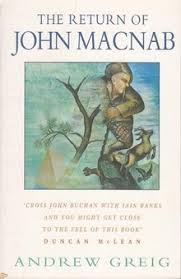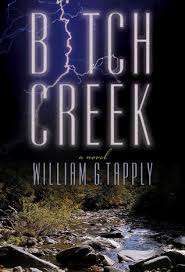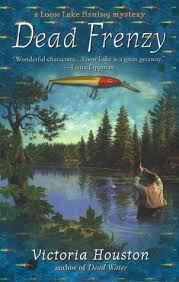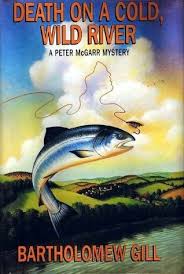I wrote a chapter in Casting into Mystery, ‘Books for a Winter’s Night,’ that surveys contemporary fly fishing mystery writing. What follows is an updated and expanded examination of what continues as a vibrant sub-genre of a popular form of fiction. Almost immediately upon release of Casting I either found or was introduced by other literary anglers to mystery writers who deal with ‘outdoor’ themes including fly angling. This remains a highly personal survey of fly fishing mysteries I have read and enjoyed rather than a comprehensive critical bibliography
Literature is a great river, as long and broad as it is deep. If mystery fiction is a tributary, then fly angling mysteries comprise a cold clear feeder stream. Interestingly fly fishing and mystery fiction flow from sources dating back to the late Medieval period between 1000 and 1500, commonly known as the Age of Chivalry.
The nineteenth-century American writer and fly fisherman Washington Irving seemed to be intuitively aware of the link between chivalry and fly fishing when he wrote in ‘The Angler’, from The Sketch Book of Geoffrey Crayton, Gent that: We took rod in hand and sallied into the country, as stark mad as was ever Don Quixote from reading books of chivalry.’ If there is one literary figure to whom fly fishermen can relate, it is Miguel de Cervantes’ early seventeenth-century creation Don Quixote. If there is a better description of fly fishing than at tilting at windmills I have not heard of it.
The mystery–and its genre offsprings: political thriller, crime novel or police procedural and suspense novel–are modern narrative adaptations of the romance, the popular literary form that gave expression to the moral code that defined writing in the Age of Chivalry.
The shadowy figure of Dame Juliana Berniers, herself enshrouded in mystery, is alleged to have been born in 1388. The Boke of Seynt Albans, (Book of Saint Albans)–which contains the ‘Treatyse of Fysshynge wyth an Angle’ (‘Treatise on Fishing’)– was printed in 1486. The Treatise is essentially a moral code or philosophy of living applied to angling, which undoubtedly influenced Isaak Walton when he wrote his own moral code of angling. First published in 1653, The Compleat Angler is the most frequently reprinted book in the English language except for a couple of other narrative moral codes, the Bible and Pilgrim’s Progress.
Gervase Markham, an English mercenary who was a prolific poet and writer when he wasn’t hiring out his military skills, was an avid fly fisherman who edited one of numerous reprints of the Book of Saint Albans. In 1614 he penned The Pleasures of Princes, or Good Men’s Recreations, which documents his thoughts on fishing (including its virtues and moral responsibilities) and cockfighting. Interestingly he acknowledged the relationship between angling and writing, when he observed: ‘Any angler must be a scholar and a grammarian, able to write and discourse on his art in true and fitting terms.’ (I have tried with my modest talent to put this sage advice into practice.)
Fly angling mysteries follow two parallel currents: fly angers who write fiction; and fiction writers who write about fly fishing. Further, those who write fly angling mysteries follow two parallel currents: those who employ fly fishing as a simple plot device, a means to propel the action, and as a picturesque setting; and those who weave elements of fly into theme and form, plot and character, and weave landscape into the narrative flow. James Lee Burke is an admirable example of the former, while Keith McCafferty and John Galligan are admirable examples of the latter.
Finally I use the phrase ‘fly angling mystery’ because I am as enthusiastic about the contemplative recreation (to paraphrase Walton) as I am literature. My use of the phrase spans a range of ‘outdoor’ mystery fiction set in rural locations, including wilderness. Inveterate sleuths work as game wardens; forest, park or river rangers; conservation or fish and wildlife officers; small-town police officers or private investigators who moonlight as avid anglers. Some might not even be in law enforcement, but rather earn their living as fly shop and fishing lodge owners or professional fishing guides. Although fly angling mysteries feature the formal and thematic conventions that define the genre, they often incorporate issues that arise directly out of setting, especially ecological and natural resource issues.

Fly angling mysteries have been around for a while. In 1925 Scottish novelist, historian and politician John Buchan— who served as Canada’s Governor General from 1935 to 1940 as Lord Tweedsmuir—published John Macnab, an entertaining blend of mystery, poaching adventure and Highland period piece. Scottish writer Andrew Greig, a literary fly angler, reimagined Buchan’s novel in 1996 in The Return of John Macnab.
Such classic mystery writers as Agatha Christie, Ngaio Marsh, Dorothy L. Sayers and Caroline Graham fished the pools of piscatorial murder and mayhem long before contemporary crime writers cast their lines. The first contemporary fly angling mysteries I read were David Leitz’s Max Addams novels including Casting in Dead Water, Dying to Fly Fish and Fly Fishing Can Be Fatal. Max, a fishing lodge owner in seeing New England, never goes looking for murder; murder always finds him.
Like an angler in unfamiliar water, I began prospecting for fly angling mysteries in bookstores, both new and used, as well as angling websites and online book retailers. I assembled a collection of mysteries to complement my fly fishing library encompassing novels, story collections, poetry, essays and memoirs, in addition to vintage instructional non-fiction.

As a writer William G. Tapply was a double-haul caster. A fine crime novelist (his Brady Coyne series takes place in Boston and throughout New England), he also was an excellent outdoor writer of both memoirs and instructional books. Although fly angling recurs in the Coyne mysteries, it beats at the heart of his last three novels featuring Stoney Calhoun, a fishing guide with a mysterious past who lives in Maine (Bitch Creek, Gray Ghost, Dark Tiger).
John Larison is a river steward, guide and teacher in Oregon who has written a couple of mystery novels set in the Northwest including Northwest of Normal and Holding Lies. Another Oregon writer, Warren Easley, has written a pair of mysteries (Matters of Doubt and Dead Float) featuring Cal Claxton, a former L.A. prosecutor who practices law so he can fish more.
Wisconsin’s John Galligan is a college writing teacher who developed a series (The Nail Knot, The Blood Knot, The Clinch Knot, The Wind Knot) featuring a peripatetic fly fisherman named Dog who goes in search of fish and finds murder. Wyoming’s David Riley Bertsch’s Jake Trent series includes Death Canyon and River of No Return. California-based short-fiction, outdoor writer Jim Tenuto’s Blood Atonement features Montana fly fishing guide Dahlgren Wallace.
Michigan’s Joseph Heywood has written a dozen novels in the Woods Cop series, including Ice Hunter, Blue Wolf in Green Fire, Chasing a Blond Moon, Running Dark, Dark Roe and Strike Dog in addition to the intriguing fly fishing fantasy novel The Snowfly. Ronald Weber, professor emeritus of American studies at the University of Notre Dame, has written a trio of mysteries set in Northern Michigan and featuring a male newspaperman and female natural resources officer: Aluminum Hatch, Catch and Keep and Riverwatcher.
Fly angling mystery writers are not limited to men.
Nevada Barr is undoubtedly the best-known female outdoor mystery writer. After graduating with a master’s degree in theatre, Barr worked in theatre, television and film before following her husband’s commitment to the environmental cause. She switched careers and worked as a park ranger prior to resigning to write full time when her books gained commercial success. Barr’s fictional sleuth, Anna Pigeon, is a law enforcement ranger with the United States National Parks Service who travels from park to park across America, solving murders which are often related to environmental issues. After releasing close to 20 titles she has yet to devote a mystery to fly fishing. She is overdue.

Wisconsin’s Victoria Houston is a prolific female mystery writer who gives fishing—with live-bait and hard-lure as well as with fur and feather—a prominent role in her fiction. Her Loon Lake series features retired dentist/fly angler Paul Osborne who is routinely deputized by police chief/fly angler Lewellyn Ferris.
Mary Alice Monroe is a popular writer who explores ‘women’ themes rather than a mystery writer. Although Time is a River is not a conventional mystery, it contains elements of the ‘supernatural.’ Recovering from two kinds of trauma, breast cancer and her husband’s infidelity, Mia Landan flees her Charleston home for the Blue Ridge Mountains, where she takes refuge in a neglected cabin inherited by her fly fishing instructor. Memory and fly angling help Mia find forgiveness and achieve redemption.
If you are a reader who subscribes to the notion that fly anglers are ethically purer than other kinds of anglers prepare yourself for a reality check from Beth Groundwater. Wicked Eddies, the second instalment in her Rocky Mountain Outdoor Adventure series, paints a portrait of a fly fisherman who is not only a cheat and a liar, but as despicable a human being as a reader can imagine.
There are many more fly fishing mystery novels. These are simply the ones I’ve collected, read and enjoyed. For anglers eager to dip the toes of wading boots into fly fishing mystery I suggest Hook, Line & Sinister. The collection of short fiction is edited by T. Jefferson Parker and features stories by such prominent mystery writers as Michael Connelly, C.J. Box, Houston and Tapply.
Although not primarily a fly fishing mystery writer, James Lee Burke is one of America’s most accomplished crime novelists. He is also a fly angler who writes brilliantly about the recreational sport. I devour any novel that has the slightest taste of fly angling, whether it involves Louisiana sheriff’s detective Dave Robicheaux or former Texas Ranger Billy Bob Holland.
I enjoy authors who are not specifically fly fishing mystery writers but set their crime novels in wilderness areas, featuring protagonists who are forest rangers, conservation officers or game wardens. Box’s Joe Pickett series is set in Wyoming and offers an occasional fly fishing cameo. Box, a fly angler, has written about fly fishing elsewhere including a story in his story collection Shots Fired. I would like to see more of it in his books, maybe even a mystery that revolves around the sport.
Paul Doiron’s Mike Bowditch series, which is set in Maine, is equally accomplished. Given that he is a Registered Maine Guide specializing in fly fishing and lives on a trout stream I am surprised the sport has not found its way into any of his close to a dozen mysteries. I’d say it’s about bloody time, Paul.
Ernest Hemingway was not the first, nor will he be the last, newspaperman to write exemplary fiction about fishing generally and fly fishing specifically.
Carl Hiaasen was born, raised and educated in Florida, where he has lived all his life. A longtime newspaperman at the Miami Herald, where he is a columnist, he started writing novels in the early 1980s. His 1987 mystery Double Whammy is a weird and wonderful criminal romp covering sex, murder and corruption on the professional competitive bass-fishing tour.
John Sanford is one of America’s most popular and most prolific mystery writers, with no fewer than three longstanding interconnected series on the go. He was known by his birth name, John Roswell Camp, when he was a newspaperman who started at the Miami Herald before being nominated and eventually winning the Pulitzer Prize.
My favourite series features Virgil Flowers (known not aways affectionately as ‘that fucking Flowers’). Flowers might not be a fly fisherman but I know of no more obsessive a fisherman in mystery fiction. Seldom does the Bureau of Criminal Apprehension investigator go on a case somewhere in rural Minnesota without hauling a boat behind his pickup, just so he can grab a few hours fishing for bass, muskie or some other northern gamefish. In Rough Country, the third novel in the series, Virgil is dragged away from a muskie tournament to solve a murder at a remote lodge that caters to women attracted to other women.

Bartholomew Gill was the pen name of the late Mark C. McGarrity, an Irish-American mystery novelist and newspaper feature writer and columnist reporting on nature and outdoor recreation for New Jersey’s Star-Ledger. He wrote sixteen Peter McGarr mysteries. In Death on a Cold, Wild River the chief superintendent of the Irish Police’s elite Murder Squad investigates the suspicious death of a famous fly angling writer, guide and fly shop owner (who happens to be an old flame). The action unfolds in what has become known as Yeats’ Country on Ireland’s myth-haunted West Coast. Death on a Cold, Wild River is a fly angler’s feast with a buffet of salmon fishing and fly tying served with a dram of ancient Celtic mythology. Deeelicious!
William Kent Krueger’s Cork O’Connor series features an ex-sheriff of Tamarack County, nestled in the Boundary Waters of the Quetico-Superior Wilderness with its two-million acres of dense forest, whitewater rapids and uncharted islands on the Canadian-American border. I don’t know whether Krueger is a fisherman or fly angler but I would like to see more of the sport in his mysteries, given how important it is to the area in which his stories are set.
I would like to mention a trio of novels by literary authors that weave fly fishing into mystery narratives. The Trout, by Irish novelist Peter Cunningham, is a story about the dark stain the Roman Catholic Church casts across Ireland. The novel–which begins in Ontario’s Muskoka before shifting to Ireland, with a detour to Michigan–is punctuated with lovely passages, set pieces really, about fly fishing for trout.
Peter Heller’s The Painter is an accomplished novel built on a foundation of the mystery genre featuring Jim Stegner (perhaps a nod to Wallace Stegner?), a man who cannot avoid trouble. It is also a meditation on love and loss, authenticity and celebrity, obsession and inspiration, passion and violence, not to mention the redemptive power of art and fly fishing.
Jim is not inherently bad. After all, he is a successful, self-taught artist—the darling of critics because of the blue-collar, outsider status. He is also a determined fly angler. Fly fishing for wild trout runs through The Painter like a Montana spring creek, where much of the action takes place.
Jim is big and burly, with a thick, grey beard. The locals call him Hemingway because he looks so much like the famous writer. He is popular with sexy women; he is comfortable with kids. He is a good friend to good men. However, he can be violent when pushed, capable of shooting a sexual predator point-blank or killing in cold blood two brothers who happen to be irredeemable poachers.
A reformed alcoholic and gambler, and two-time loser at marriage, Jim controls his incendiary temper through painting and fishing. He is attuned to the melody of trout rivers, through which he communes with his dead daughter.
Equally seductive is Heller’s subsequent mystery The River, a canoeing misadventure set on a legendary river with a sinister history that feeds into Hudson Bay in the Northwest Ontario. Two college pals, one from Vermont and one from Colorado (both fly fishing meccas), learn a great deal about themselves, and one another, when they paddle into whitewater murder fuelled by wildfire–literally.
Raymond Carver remains a giant among American short story writers. He was also an avid fly fisherman who wrote excellent poems about rivers and angling. He has fun playing the angling mystery genre in his story ‘So Much Water So Close to Home’.
The satirical tale tells of a group of buddies who go fishing for a few days, discover the corpse of a murdered woman and decide not to report the grisly finding to police until the conclusion of their wilderness trip. (I suspect only a fly angler would find this convincing or credible behaviour.) Their tardiness causes all kinds of grief for the narrator who falls under the crosshairs of his astonished and disbelieving wife.
I suspect Richard Dokey, a philosophy professor and longtime fly angler based in California, had a Carver in mind when he wrote some of the collected in his ‘Hemingwayesuqe’ Fly Fishing the River Styx.
J. Michael Stewart returns to the place where he was born and raised for Smoke on the Mountain. Atlanta attorney Cody McAlister seeks refuge from the creeping alcoholism that accompanies a job that no longer satisfies and an ugly divorce by escaping into the Smokey Mountains on a backcountry fly fishing trip. The mystery is not what brings him to the edge of death—a bear on a bloody rampage—but whether he will be found, rescued and saved in time.
Stewart’s tale of wilderness survival hinges on the primeval fear aroused by nature’s most menacing, vicious and bloodthirsty creatures. Gossip, prejudice and ignorance, not to mention legend, folklore and myth, conspire as much as animal psychology, wilderness behaviour and sensational media accounts to create stories that raise hair on the back of necks, palpitate hearts and interrupt sleep.